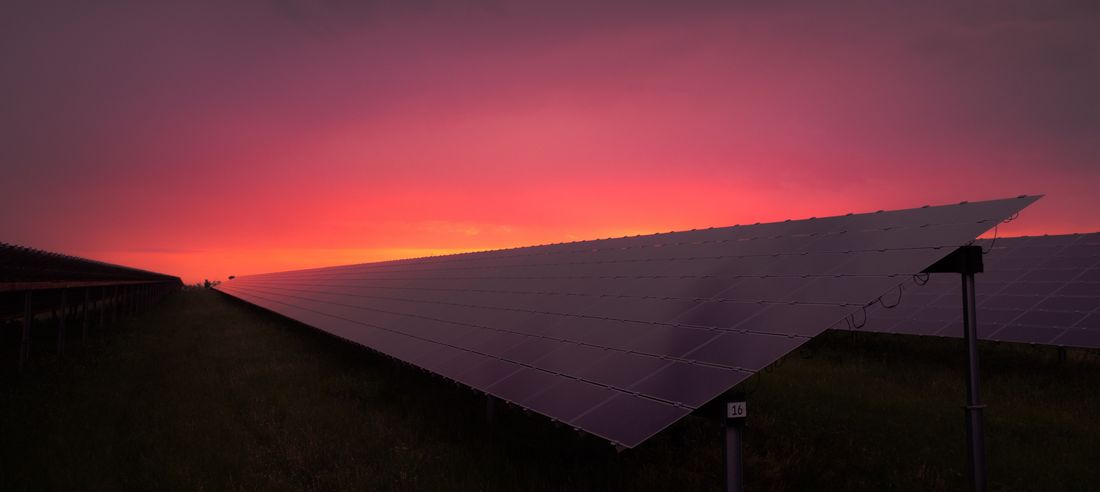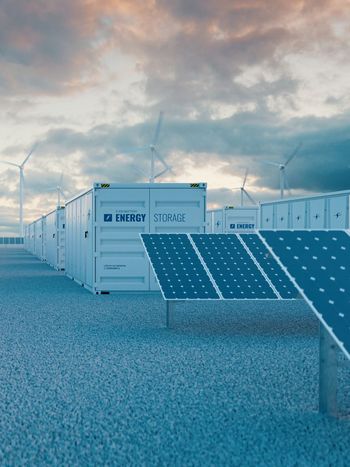#energytransition: provoking collaboration across the energy industry
CIGRE Session Paris 2022 has been a watershed for the energy industry, for CIGRE and for individuals, as we come to terms with the passage through COVID-19 pandemic, the new reality of energy security and the greatest challenge of decarbonization of our energy system.
This article looks to evaluate how CIGRE can play a pivotal role in the HOW of the energy transition. Specifically in the capacity and capability development of a much more diverse pool of talent working in our energy industry and in actively supporting a more transparent and collaborative approach to delivering the necessary energy transition.

By Adam Middleton (CIGRE UK) with valued contributions by Prof Ray Zhang (CIGRE UK), Prof Keith Bell (CIGRE UK), Peter Weinreich-Jensen (CIGRE DK), Prof Dennis Sherwood & Onyeche Tifasi
Beyond Paris
At the session in Paris 2022 and beyond, there has been a growing awareness that “business as usual will deliver solutions as usual”, rather than the seismic shift that is required to decarbonize the planet.
The awareness that “business as usual” won´t bring the necessary speed in the #energytransistion is provoking heightened debate about cross-industry collaboration can be created as a key building block for delivering the #energytransition.
Let’s try to expand on what comprises “business as usual”, and whose “business as usual” it is?
- In the high income, already-industrialized world, many countries are now decarbonizing their production of electricity but, in common with developments at more or less any time since the 1980s, only at steady pace. Other countries are moving in that direction only very slowly, even when their supplies of gas have been disrupted by global gas price hikes of the last 12 months and, to compensate, they’re delaying closures of coal-fired power stations and burning more coal.
- Many industrializing countries may be developing their electricity systems at a much faster rate than in the older economies, but they are continuing to expand their use of fossil fuels, in generation of electricity, in heavy industry and in transport, in spite of the lack of sustainability of such fuels.
- In other countries, the rate of extension of access to electricity means that it will still be many years before almost all of their citizens will be able to use it.
In short: in order to achieve 2030 and 2050 climate goals, in some countries we need to speed up dramatically; in others we need a significant change of direction in energy policy.
Only by optimally deploying scarce resources can the energy industry optimize the deployment of renewable and transition technologies supporting 2030 and 2050 climate goals, noting also that the “scarce resources” may well change over time. There remains wide agreement that missing these goals would have disastrous consequences for our planet and existence. Both innovative solutions and innovative approaches are required to ACCELERATE the development and delivery of the NetZero goals.
Boundaries and blockages for the necessary #energytransition are apparent. There is a major risk that organizations in traditional competitive markets will follow predominantly those market drivers, rather than the overall decarbonization objectives. So are new drivers and rules required if we are to really deliver the decarbonization goals of 2030 and 2050?
Let us not forget also the context of critical national energy security and spiraling cost of energy for consumers and industry, becoming a political time bomb. This risks pulling the focus potentially away from the energy transition and decarbonization towards “keeping the lights on” next winter.
Whilst the energy transition is quite simply the greatest human challenge for multiple generations, the next generation of talented colleagues can be attracted by both the climate goals and the technological challenges. This is also in the context of greater workload and stress being placed upon fewer people in the energy industry, giving rise to growing concerns over burn out and stress-related issues.
Simply put: we cannot just run faster. We have to make proactive choices about what we are now NOT going to be doing (E.g. how we can become massively more effective and productive in the conception and deployment of major decarbonization programs); how we can eliminate duplication of effort, significantly reduce non-added value activities and use critical expertise to DELIVER decarbonized energy.
New Energy Industry Working Models
How can the energy industry now update its traditional working model? HOW becomes the critical driver, since WHAT is close at hand in a number of cases (including renewable energy, green hydrogen, intelligent networks, carbon capture and storage) and can be complemented by other new critical developments (E.g. Direct Air Capture of CO2). Simply put: we must continue to work with what we have, and introduce better technologies and techniques along the journey.
Would a working model with long-range strategic planning actually be the most practical way to address the HOW of decarbonization? This would mean (not exhaustive):
- Strategic Intent: One overall long term strategic decarbonization plan, stretching over multiple decades and hence over multiple changes of government in both countries and regions (E.g. European Union). Understanding that energy infrastructure is critical to national and regional political stability and economic development, hence requiring strategies to maintain essential independence.
- Material Supply: Ensuring that adequate supply of critical raw materials is secured to deliver the energy transition.
- People Supply: A portfolio of programs to attract, develop and retain talented people in the energy industry, both young and retrained/migrated engineers, but also a far wider, more inclusive range of talents previously seen as “not immediately relevant” to the energy industry. This would need to commence early in the school curriculum in order to have a source of STEM-trained future employees for the energy and associated industries.
- Markets: Establishment of revised energy and competition market models, focused upon 2030 and 2050 goals, in addition to shorter term security and cost essentials. The focus would be around the best use of limited resources towards deployment and integration of lower carbon technologies, in a compliant manner.
- Methodology: A circular economy to reduce the waste and pollution, circulate products and materials, with minimized overlap of activities and hence resources.
- Energy Efficiency: Through the process, an integrated and systematic approach to reduction of energy demand and increases in energy efficiency.
- Outputs: A consolidated roadmap, showing a realistic set of steps to deliver 2030 and 2050 goals.
Critical to the above would be the ability of the energy industry to work in a transparent, collaborative and compliant manner with the prime focus upon delivering the energy transition and decarbonization through sharing of scarce resources (E.g. avoiding duplication of activities). At the same time, the recent past has shown the critical need for to be able to deal with extraordinary external factors on a more regular basis. It is both on supplier and customer side of the energy industry that we need to become “weatherproof” from wars, pandemics, scarcity of raw materials, flooding, rise in sea levels etc. Organizations will need to become more resilient or “weatherproof” against the inevitable implications coming from such macro-economic, environmental and societal changes.
CIGRE - The Next 100 Years
CIGRE has an important role in the next 100 years of the energy industry: daring to embrace the challenges of the energy transition, embracing and taking a leading role in the supply and development of a wider, more diverse group of talented people, who have the appetite and drive to be part of the biggest challenge facing mankind: decarbonization. And making it happen.
So: to whom does the responsibility fall to address these unprecedented challenges? CIGRE will not involve itself in political issues, and it must remain impartial. However, our industry needs now to adapt to unprecedented growth in demand, that will require new collaboration and commitment across the complete energy value chain, achieved in a compliant manner. Binding, long-term commitments to increase production capacities will be part of the jigsaw in order to support unprecedented investment, together with some new rules for the new challenges we will all face.
We need to invest in the workforce before we become ‘distressed buyers’. We cannot wait for all of the orders to arrive or regulatory approvals to be given (for example, the massive build out of offshore wind in the North Sea). That will be too late because it takes time to develop people. That includes both their formal education in schools, colleges and universities, and their informal education, learning ‘on the job’ and being mentored. In particular, we need to make sure that happens before the people who would be the best mentors retire or ‘are retired’ - experienced staff need to be valued perhaps even more highly than they have tended to be in many parts of the industry in recent years.
How can the energy sector be persuaded to be more collaborative, in a compliant manner? Why should companies that are in competition with each other and jealously guard their IP be open and collaborative? Perhaps this is the biggest question that we face today.
CIGRE can take a long-term view, a long-term view that’s essential in this instance, which is substantially longer term than many of the stakeholders in the industry.
CIGRE ‘touches’ the source of three key resources: Capital. People. Technology. Put those three together and you have three of the essential components for change. CIGRE, though, can make a difference that matters. Decarbonization, big time. Electricity storage, at scale. New technologies, like Carbon Capture and Storage (CCUS) that really works, and ultimately, Direct Air Capture (DAC).
CIGRE is therefore poised to take real, effective, global leadership. For to do so requires collaboration. A sharing of resources. A true commitment to the same overarching goal. And, most important of all, trust. Yes, in microcosm, we are commercial competitors and respect absolutely the rules. But what’s the point in competing for an end game which is a void? Surely, now is the time for new, truly strategic teamwork.
Banner & thumbanil picture: Photo by Karsten Würth on Unsplash


